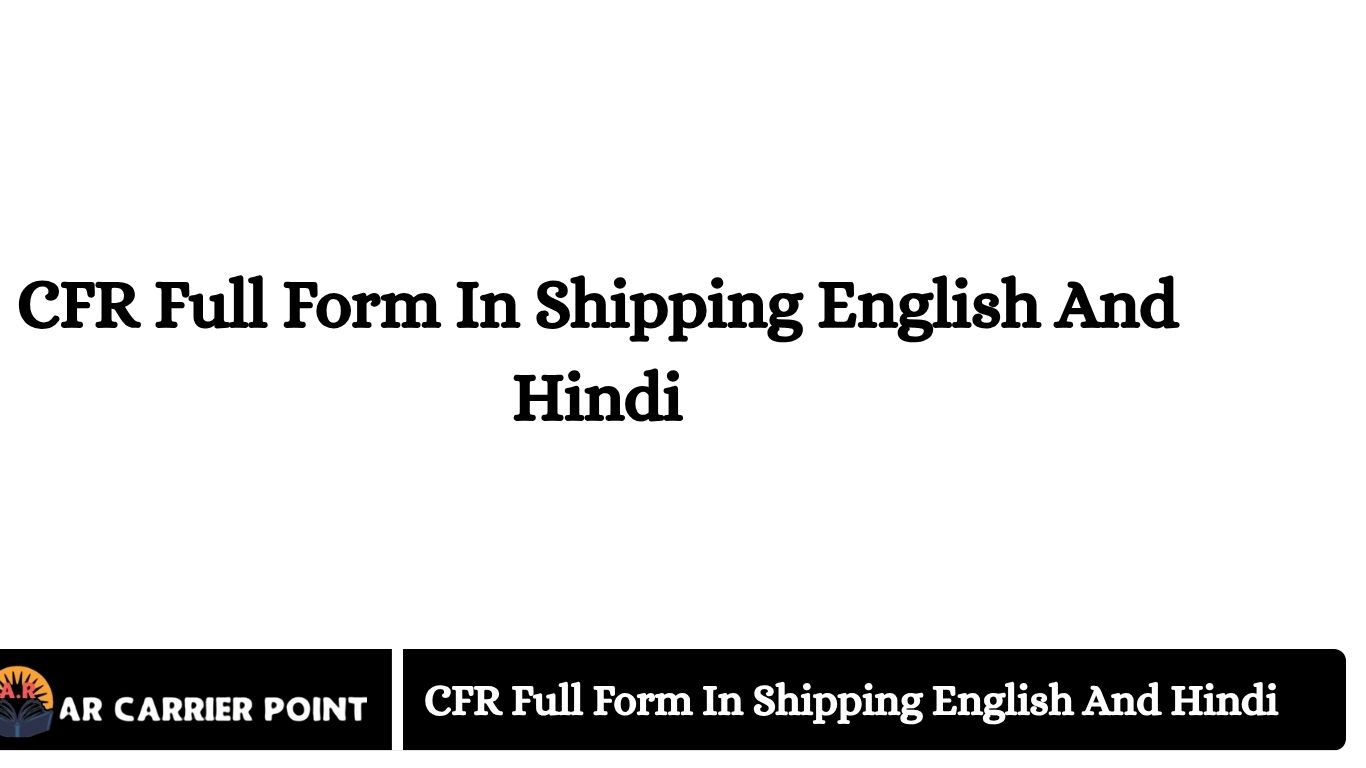CFR Full Form In Shipping English
CFR stands for Cost and Freight. It is a commonly used term in international shipping and trade under the Incoterms rules set by the International Chamber of Commerce (ICC). When goods are shipped under CFR terms, the seller is responsible for arranging and paying for the transportation of the goods to the named port of destination. However, the risk of loss or damage to the goods transfers from the seller to the buyer once the goods are loaded onto the ship at the port of shipment. CFR clearly defines the responsibilities of both the buyer and the seller in terms of cost and risk during the shipping process.
CFR Full Form In Shipping Hindi
CFR का मतलब होता है कॉस्ट एंड फ्रेट (Cost and Freight)। यह एक अंतरराष्ट्रीय व्यापार में इस्तेमाल होने वाला टर्म है, जो ICC (इंटरनेशनल चैंबर ऑफ कॉमर्स) के Incoterms नियमों के तहत आता है। CFR में, सामान भेजने वाला (सेलर) सामान को जहाज़ पर लादने तक की सभी लागत और फ्रेट (परिवहन खर्च) का भुगतान करता है और सामान को गंतव्य पोर्ट तक पहुँचाने की व्यवस्था करता है। लेकिन सामान का रिस्क (खतरा), जैसे नुकसान या चोरी का खतरा, उस समय खरीदार (बायर) को स्थानांतरित हो जाता है जब सामान जहाज़ पर लादा जाता है। CFR से व्यापार में दोनों पक्षों की जिम्मेदारियाँ साफ़ हो जाती हैं।
Read More: VL Brand Full Form English And Hindi
Frequently Asked Questions
What does CFR mean in shipping?
CFR stands for Cost and Freight. It means the seller pays for the cost of transporting goods to the buyer’s port, but the risk transfers to the buyer once the goods are loaded onto the ship.
Who is responsible for the insurance under CFR?
Under CFR terms, the seller is not responsible for insurance. It is the buyer’s responsibility to arrange and pay for insurance if desired.
When does the risk transfer from the seller to the buyer in CFR?
The risk transfers from the seller to the buyer as soon as the goods are loaded on board the ship at the port of shipment.
Does CFR include customs duties at the destination?
No, CFR does not include customs duties, taxes, or any costs incurred after the goods arrive at the destination port. These costs are the buyer’s responsibility.
Can CFR be used for all types of transport?
No, CFR is only used for sea and inland waterway transport, not for air, road, or rail transport.
How is CFR different from CIF?
CIF (Cost, Insurance, and Freight) is similar to CFR, but under CIF, the seller also pays for insurance. In CFR, the buyer handles insurance.
Conclusion
CFR, or Cost and Freight, is an important shipping term that clearly defines the responsibilities of the buyer and seller in international trade. While the seller covers the cost of transporting goods to the destination port, the risk transfers to the buyer once the goods are loaded onto the ship. Understanding CFR helps both parties avoid confusion about costs and risks during shipment, ensuring smoother and more transparent trade transactions.


